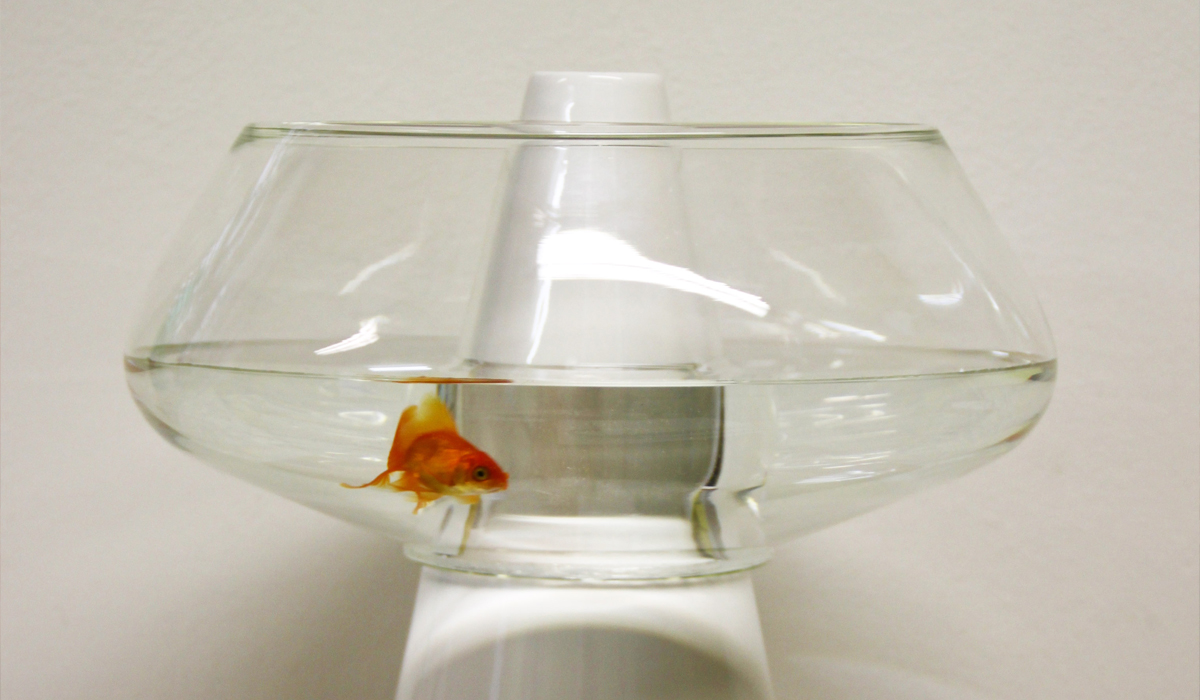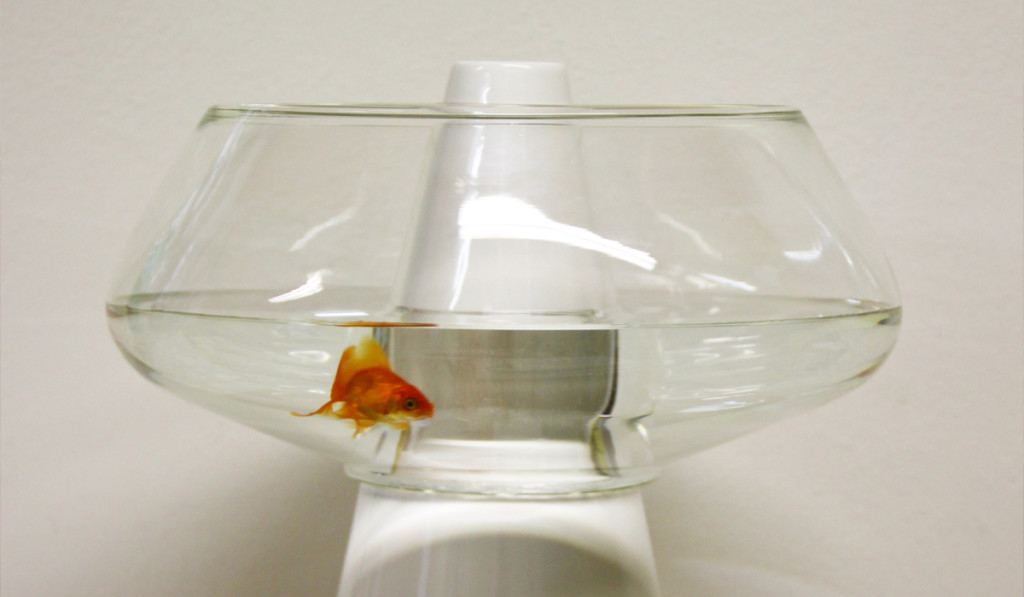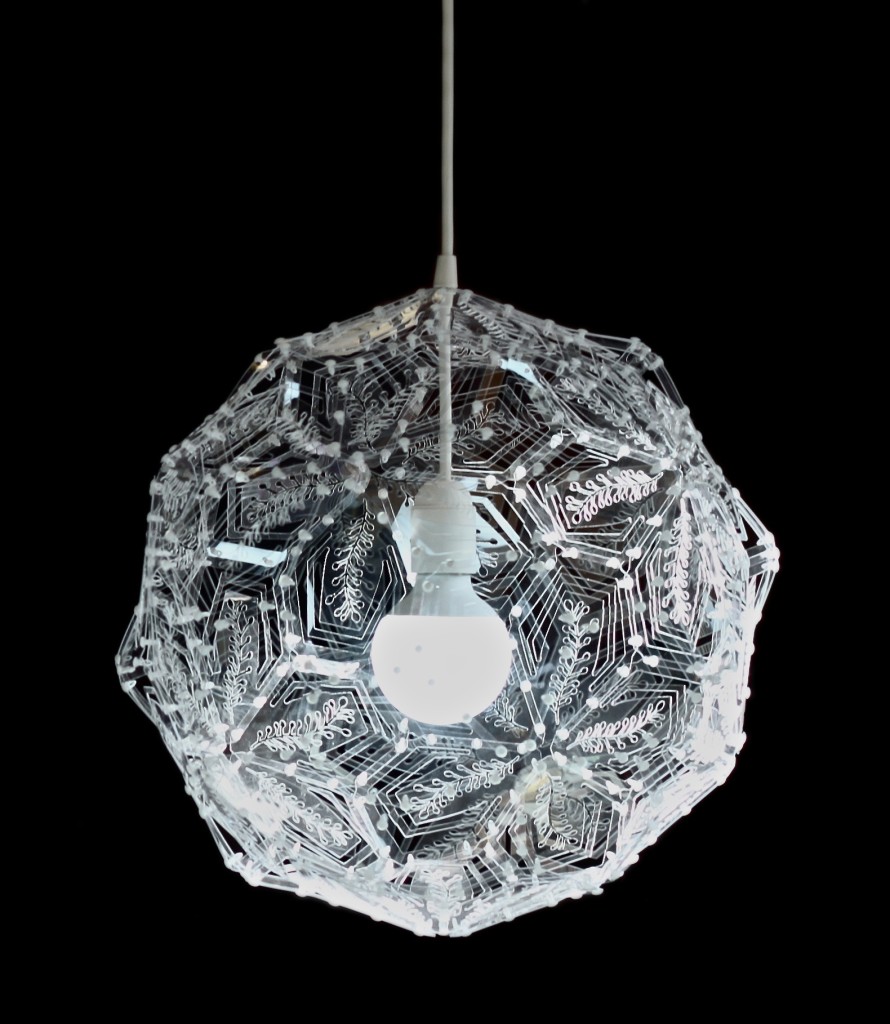Osservare lo spazio circostante ed adattarlo secondo le proprie esigenze: queste parole potrebbero riassumere la filosofia che sta alla base del lavoro di Andrea Nani, ma non renderebbero comunque giustizia alla molteplicità di aspetti che le sue creazioni abbracciano.
Da Milano alla Nuova Zelanda, passando per Pechino, questo giovane designer si sta pian piano facendo strada nel mondo (spesso complicato) delle professioni creative. Noi di The Walkman abbiamo avuto il piacere di intervistarlo per voi.
Andrea, sei giovanissimo (classe 1989), ma già piuttosto noto: di’ la verità, ti saresti mai aspettato un tale successo a soli venticinque anni?
Diciamo che successo è un termine un po’ azzardato, sento che ho ancora tanto da imparare per diventare un designer professionista. Ho sempre sperato però che la passione con cui mi dedico alla progettazione mi avrebbe dato l’opportunità di farmi un nome nel settore. E poi diciamocelo, un po’ di egocentrismo non guasta mai se si vuole diventare “qualcuno”.
Leggendo la tua biografia si nota immediatamente che hai avuto la possibilità di affinare il tuo estro in diverse parti del mondo, prime fra tutte La Nuova Zelanda (in cui hai lavorato per tre mesi), e la Cina (dove hai esposto le tue creazioni alla Design Week di Pechino). In che modo queste esperienze hanno influenzato il tuo modo di creare e produrre?
Sono sicuramente esperienze che mi han fatto maturare sia come persona che come designer. La possibilità di confrontarsi con culture e popolazioni completamente distanti dagli standard europei, mi ha permesso di evolvere il mio stile e trovare nuovi spunti di riflessione e ispirazione. Il mondo è vasto e meraviglioso e sicuramente l’utilizzo di elementi derivanti dalle tradizioni di etnie diverse sarà per me al centro di nuovi stimoli progettuali.
Hai partecipato all’edizione 2013 di Fuorisalone, principale evento a livello internazionale per designer ed arredatori, che si svolge ogni anno a Milano. Come è stato confrontarsi con professionisti provenienti da ogni parte del mondo e in qualche caso con più esperienza di te?
Il Salone del Mobile è stato entusiasmante, ed anche se a tratti piuttosto stancante, mi ha permesso di entrare in contatto con molti professionisti. Nell’ambito quasi tutti avevano più esperienza di me, ma la mia giovane età non è stata un deterrente per non sentirmi all’altezza della situazione.
Conosco il percorso che ho fatto, le energie e le risorse che ho investito e so di avere il potenziale per comunicare con aziende e designer già affermati.
Parliamo ora delle tue creazioni: in base a quale criterio scegli i materiali con cui produrre le tue opere?
Sinceramente non ho un criterio per la scelta dei materiali. Utilizzo ciò che al momento colpisce maggiormente la mia curiosità, ecco perchè ho progetti realizzati con i materiali più diversi: cartoncino ignifugo, resina, vetro, ceramica, tessuto, acciaio, policarbonato etc. Tento comunque di rendere l’appeal finale dell’oggetto delicato e dal sapore naturale, oltre che possibilmente riciclabile.
Curiosando tra i tuoi lavori è evidente come molti di questi (Ampoule, per citarne uno), abbiano come leitmotiv quello della natura e dell’ecologia. In che modo applichi questo ricorrente elemento nel progettare le tue collezioni?
La Natura è il mio impulso progettuale principale e da essa traggo strutture, modelli e ispirazione. In Floralibus per le geometrie frattali dei moduli, nella PaperLife Collection per il richiamo ai 4 elementi principali, in Ampoule per la capacità di far crescere la vita, in Flying Island per il richiamo a paesaggi mitici. Che sia più o meno evidente, cerco di dare sempre importanza all’aspetto bioispirato nella progettazione.
Apparentemente poni molta attenzione alla regolarità geometrica e alla compostezza delle forme: questo modo di operare in ambito professionale si riflette anche nella vita di tutti i giorni?
Assolutamente no. Sono tutt’altro che una persona composta e precisa, al contrario sono piuttosto esuberante. Ma nonostante ciò riesco ad incanalare quest’energia per creare oggetti che sono essenziali nelle forme ma capaci di comunicare una storia ed al contempo il mio punto di vista sulle cose. Mi sono reso conto che eliminando inutili virtuosismi resta solo l’oggetto nella sua pura bellezza.
“The WalkMan” si pone come obiettivo quello di lasciare spazio e visibilità ai giovani talenti. Cosa ti senti di suggerire a chi ha deciso o sta decidendo di investire la propria vita nella creatività?
La possibilità di creare qualcosa che parte da una semplice visione, si evolve nella nostra mente e prende forma tangibile è come un pezzo della nostra esperienza di vita che viene trasferita nel mondo reale. Non c’è nulla di più gratificante ed emozionante. Se sentite vostra la strada del creativo, seguite le vostre pulsioni. Sempre.
Intervista realizzata con la collaborazione di Edoardo Speranza
[divider]ENGLISH VERSION[/divider]
Observing the surrounding space and adapting it, in order to meet the needs: these words could resume the basic philosophy of the work of Andrea Nani, but they wouldn’t do real justice to the multiple aspects of his creations.
From Milan to New Zeeland, via Beijing, this young designer is gradually making his way in the world (often problematic) of the creative professions. The Walkman Magazine had the honour of interviewing him for you.
Andrea, you’re very young (born in 1989), but already quite famous: tell the truth, have you ever imagined to have success at the age of 25?
Let’s say that “success” is a bit rushed word, I feel that I have still a lot to learn to become a professional designer. I’ve always hoped that the passion I devote to design would have given me the opportunity to become famous in my sector. And let’s be honest a little of egocentrism is good if you want to make your name.
Reading your biography, people can notice immediately that you have had the possibility to make your flair grow in different parts of the world, first New Zeeland (where you worked for three months), and China (where you exhibited your creations at the Beijing Design Week). How all these experiences have influenced your way of creating and producing?
Undoubtedly, these experiences have made me wiser both as man and as designer. Thanks to the possibility to discover different cultures and people far from the European standards, I’ve developed my style and I’ve found new matters for reflection and inspiration. The world is wide and extraordinary and using elements coming from different ethnicities will be the starting point of new planning impetuses.
You took part in the 2013 edition of the Fuorisalone event, the most important for design and interior design at international level. What did you feel confronting with professionals with more experience than you?
The Salone Internazionale del mobile (an international furniture exhibition, ndt.) was exciting and even if sometimes it was tiring, it gave me the opportunity to get in touch with many designers. In that context, the majority of people were more experienced than me, but my young age was not a deterrent to make me feel inadequate in that situation.
I know my path of growth, the energies and resources that I’ve spent and I know I have the potential to communicate with famous companies and designers.
Let’s talk about your creations now: what criterion do you use to choose the materials for your creations?
Frankly, I don’t have a criterion for this choice. I decide to use what in that moment makes me more curious, that’s the reason for the variety of materials I use in my projects: fire-proof cardboard, resin, glass, ceramic, textile, steel, polycarbonate etc. Anyway, I try to make the object as more harmonious and natural as possible and, if there’s the possibility even recyclable.
Looking around your works it’s clear that some of them (Ampoule for example), have nature and ecology as leitmotiv. How do you apply this recurrent element in the planning of your collections?
Nature is my principal planning drive, I imagine structures, models, and I take inspiration. In Floralibus for the fractal geometries of the components, In PaperLife Collection for the reference to the four elements, in Ampoule for the capacity to give life to a plant, in Flying Island for the reference to mythical landscapes. Even if sometimes is more clear than others, I always try to give importance to the bio inspired aspect of the project.
It seems that you particularly worry about the geometric regularity and the harmony of shapes: this way of working is also typical of your everyday life?
Not at all. I’m far from being calm and meticulous, on the contrary I’m particularly exuberant. Anyway, I’m good at channelling my energy to invent object with an essential design, but which can transmit a story and in the same time show my point of view. I’ve understood that through the elimination of useless decorations, the real beauty of the object emerges.
The objective of “The Walkman” is to give space and visibility to young talents. What do you suggest to all those who have chosen or who are choosing to invest their life in creativity?
The possibility of creating something, which is the evolution of a simple idea, which grows in our mind and takes tangible form, is like a piece of our life experience, which is transferred in the real world. There isn’t anything more exciting and gratifying of this. If you feel the creative way your way, follow your impulse. Always.
Traduzione a cura di Eleonora Boni




